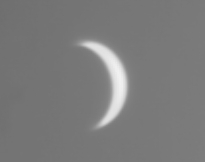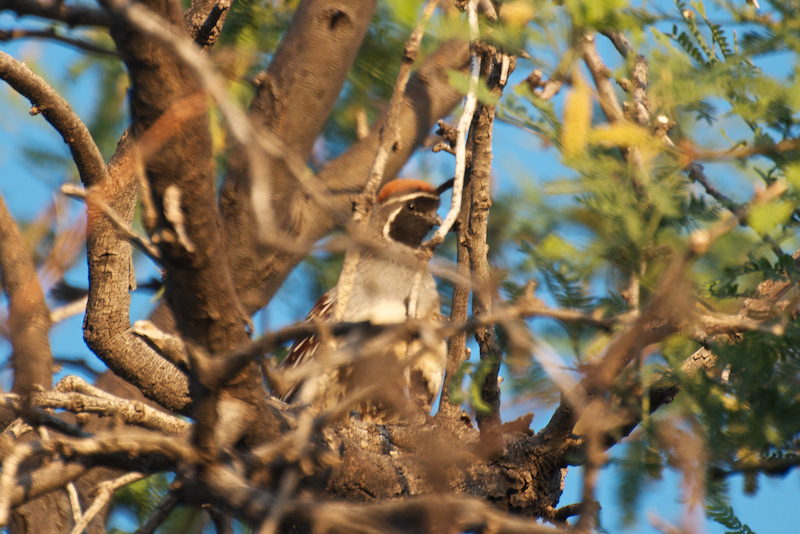
iPhone Imaging: Venus; Final Collimation
Posted: 16 May 2012
During the day on Tuesday, 15 May, I did a little bit of work on my "POD Roller Desk" and "POD iPad Platform". I cut off the ends of the remaining bolts that were longer than necessary on the Desk and I added plastic caps to the ends of the legs on the Platform.
I opened the observatory at 1809 MST, 97°F. The sky was clear but strong breezes were common. I planned to use the iPad with SkySafari 3 Pro to control the telescope once twilight ended. I also planned to finish my earlier initial re-collimation of the 8" LX200-ACF.
At 1819 MST, viewed Venus, 77X. The crescent is getting thinner. I began setting up for iPhone 4 afocal imaging using the Camera app and the Magnilux MX-1 afocal adapter. I used 222X and 444X with a moon filter, with a moon filter + LPR (Light Pollution Reduction) filter, moon filter + #21 Orange filter, and the #21 Orangle filter alone. The filters were used to reduce the planet's brightness in order to keep the Camera app from overexposing the crescent phase. The Orange filter also helped reduce the effects of atmospheric turbulence, as the seeing was not very good. I did single exposures and 30 second video recordings. The best image came from the video at 222X, moon filter + #21 Orange filter. This is a stack of 931 frames done with Keith's Image Stacker, cropped and saturation removed:

I ended imaging at 1839 MST and did visual comparison tests with the same filters at 222X. The most natural view was with the moon filter alone. The best view was with the #21 Orange filter + moon filter, but the appearance of Venus and the background sky was orange and looked unnatural.
While I was in the observatory before sunset, I was being closely watched by this Gambel's Quail high in a nearby tree:

At 1940 MST, about 35 minutes after sunset, I viewed Saturn, 77X. Three moons were visible against the still-bright sky: Titan, Rhea, and Tethys. At 1943 MST, I picked up Dione. A few minutes later, observed Mars, 77X. The sunrise cloud and a hint of a dark area were seen. The view was similar at 206X. At 364X, I could just detect the extremely small North Polar Cap. The sunrise cloud and dark area were easily seen, even though seeing was not very good.
I then began re-collimating the 8" LX200-ACF using Thierry Legault's Collimation Technique. On my earlier attempt in April 2012, I could only complete the first two steps as described in his technique. The result was pretty good collimation, but not perfect. This night I completed all three steps. At 2035 MST, I was done. Unfortunately, a strong wind had come up, which made the final two steps challenging. I checked the view on Saturn; excellent view at 364X. All visible details on the planet and Ring system were crisp (during moments of good seeing). The view was much improved over that seen before I did the re-collimation. I then checked Mars; a much better view at 364X.
Due to the strong wind, I decided to close for the night. I'll do the iPad controlled observing and a planned DSO imaging on a future session.
Closed the observatory at 2050 MST, 78°F.
Comments are welcome; use the Comments section below, or you can Email Me. Thanks.
Go to the previous report.
Return to the Cassiopeia Observatory Welcome Page.